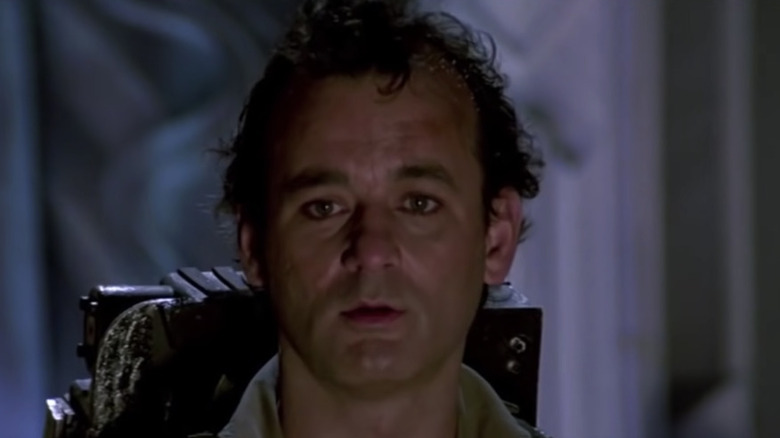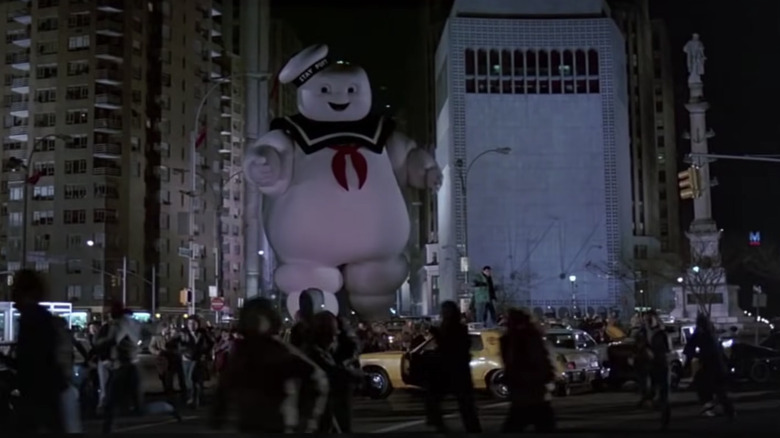The Mind-Blowing Way Ghostbuster's Stay Puft Scene Was Actually Filmed
The newly released "Ghostbusters: Afterlife" is as much a continuation of the "Ghostbusters" franchise as it is a love letter to the series as a whole – and with all the Easter eggs and callbacks that director Jason Reitman included in "Afterlife," it's worth taking a look back at the movie that started it all.
When "Ghostbusters" launched in 1984, it became a cultural phenomenon: Proton packs, the Ectomobile, and the iconic Ghostbuster uniform became essential parts of pop culture, and the film's bizarre sense of humor helped establish it as a defining film for an entire generation of moviegoers. There is perhaps no better example of the film's bizarre comedy than the iconic final battle between the Ghostbusters and a gigantic Stay-Puft Marshmallow Man that is terrorizing downtown New York.
The climactic showdown against the giant fluffy marshmallow monster is as intense and action-packed as it is laugh-out-loud silly, and has stuck with audiences for generations after it hit the big screen. It's one of the most memorable and influential scenes in movie history (let alone the "Ghostbuster" franchise itself). In the current age of CGI, it might shock many fans to learn just how difficult it was to film the ambitious battle sequence.
The power of practical special effects
When director Ivan Reitman read Dan Akyroyd's original script, he stated that the movie would be impossible to film due to the ludicrous special effects the story would require — and while it obviously didn't end up being impossible, it was certainly very difficult. In order to correctly represent the scale of the Stay-Puft Marshmallow Man, the set designers actually had to build a 1/18th scale model of downtown New York and fill it with handcrafted model cars built from toys (via CineFix).
There were several different Marshmallow Man suits constructed for the project, and at least three unique puppeteered Marshmallow heads were sculpted to represent a complete range of emotion on the monster's face. The heads were so complicated that it took four puppeteers to control the monster's face as it lumbered around the set.
As if that weren't complex enough, for the scene where the Marshmallow Man is set on fire and begins scaling a building, the VFX department constructed a fire-retardant version of the suit and a head that could melt realistically in the fire. After the head "melted," the team dumped hundreds of gallons of shaving cream on the life-sized street, enough to a stuntman to the ground.
The emphasis on practical effects and the painstaking detail taken in crafting this scene is a big part of why the final battle continues to hold up remarkably well even to this day.

